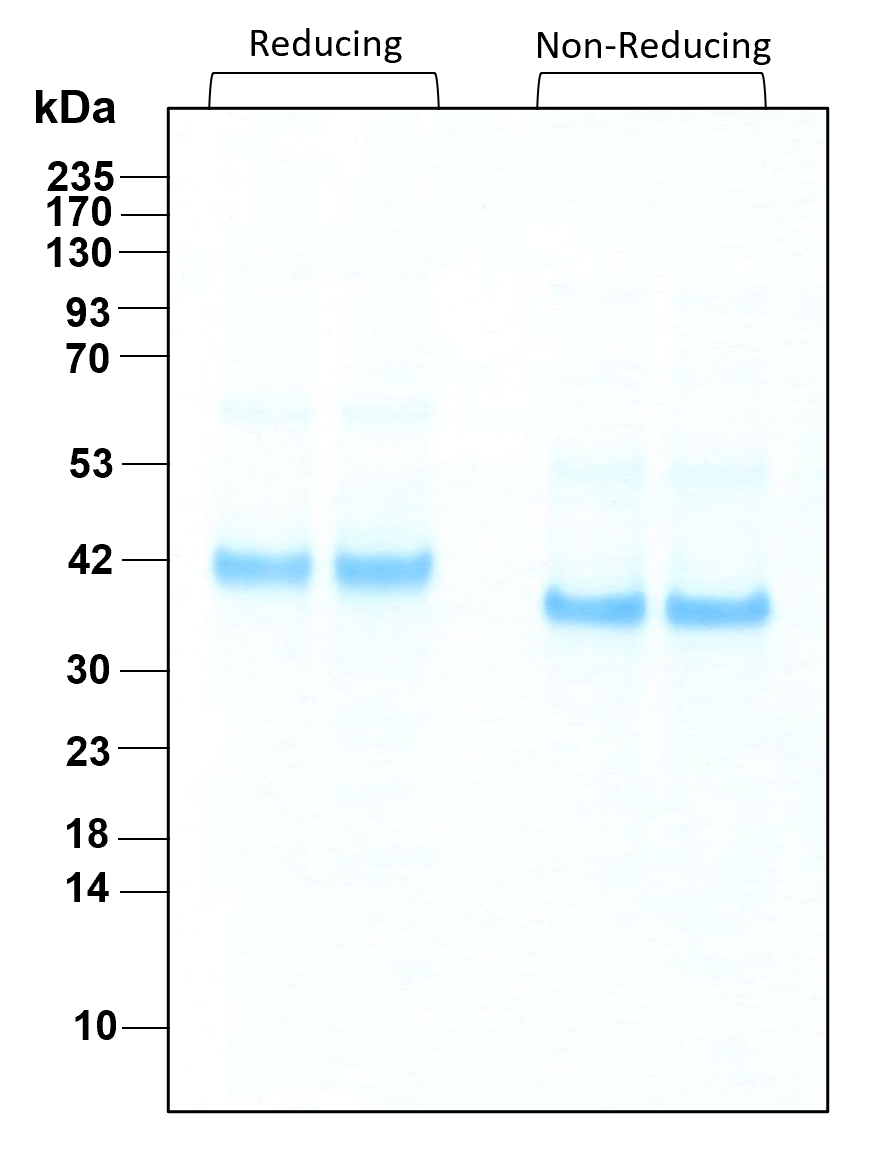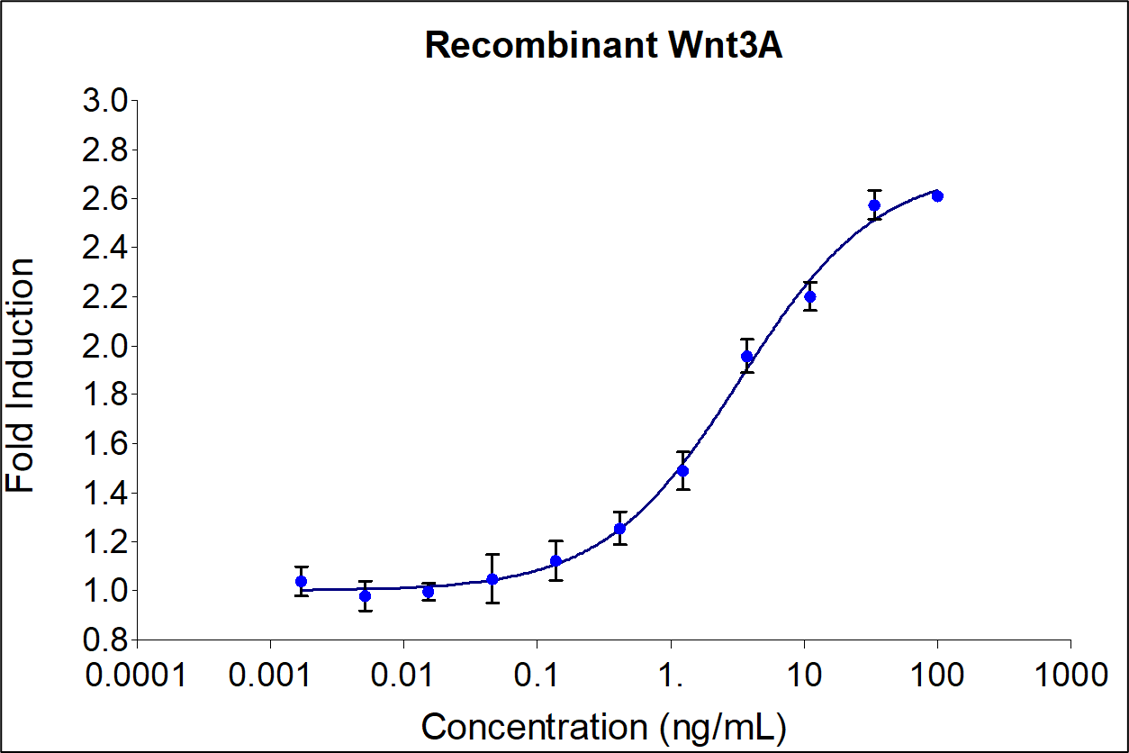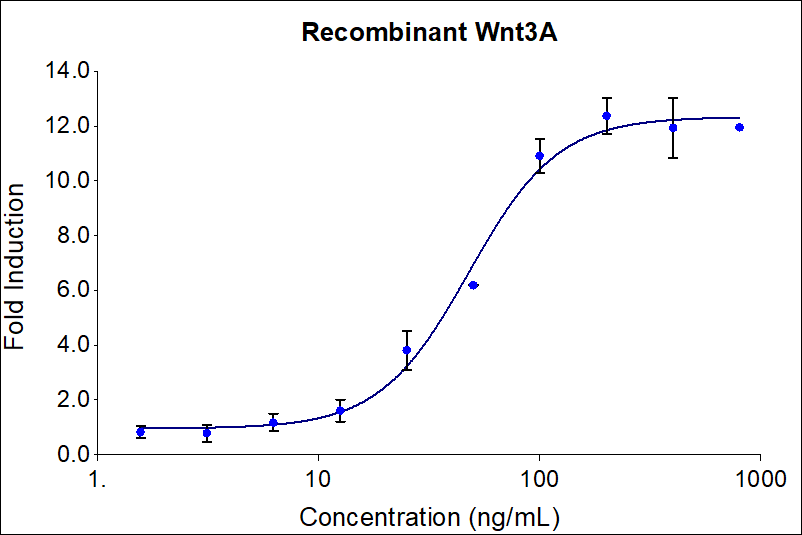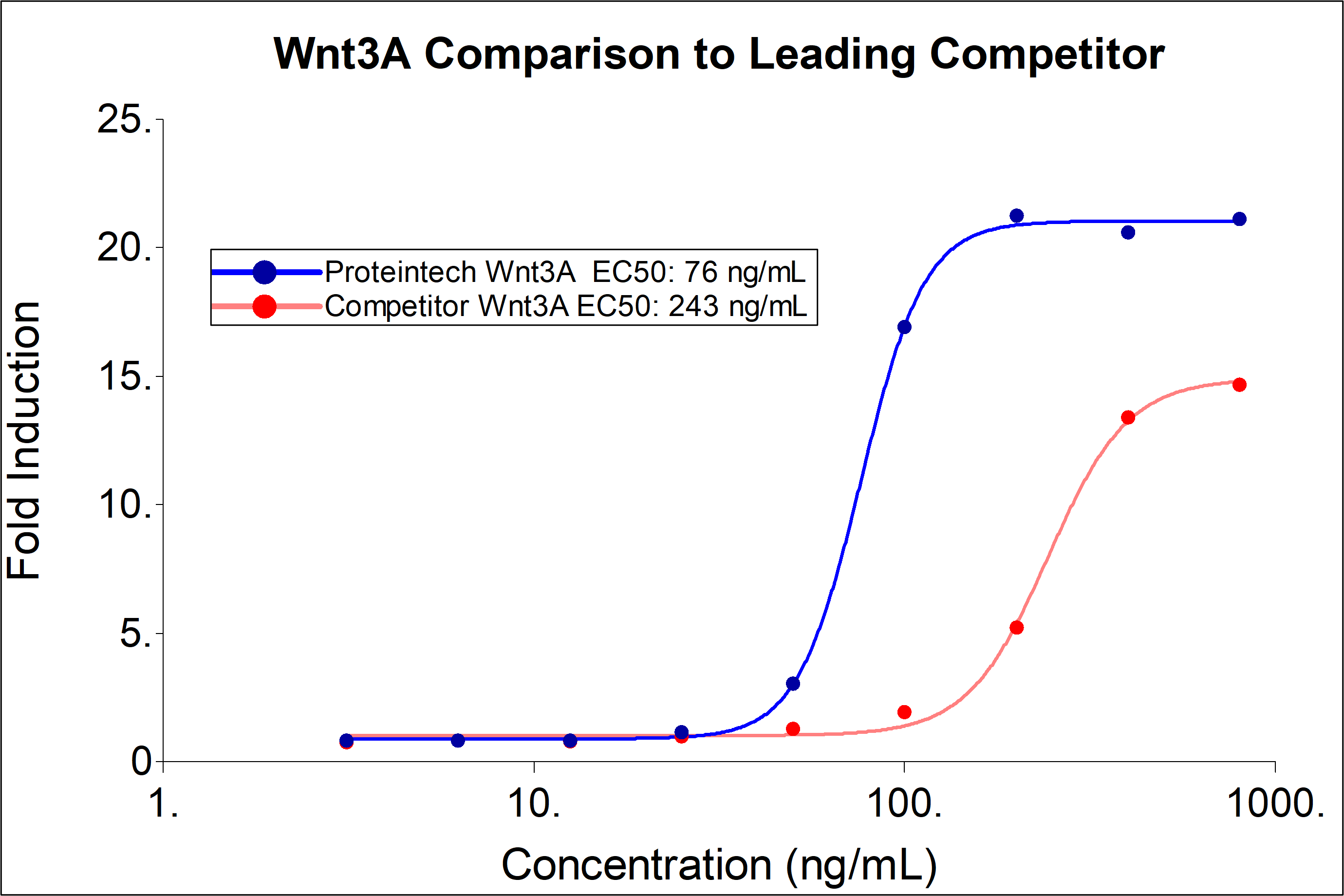Validation Data Gallery
Technical Specifications
| GeneID | 89780 |
| Species | Human |
| Expression | HEK293 |
| Activity | 25-500 ng/mL in reporter cells |
| Purity | >90% |
| Endotoxin | <1 EU/μg |
| Accession Number | P56704 |
| Molecular Mass | 42 kDa reduced, 40 kDa non-reduced, monomer, glycosylated |
| Formulation | 1x PBS pH 7.4 + 1% CHAPS, See Certificate of Analysis for details |
| Species Reactivity | human,mouse |
Stability and Reconstitution
| Stability and Storage | Product Form | Temperature Conditions | Storage Time (From Date of Receipt) |
|---|---|---|---|
| Lyophilized | -20°C to -80°C | Until Expiry Date | |
| Lyophilized | Room Temperature | 2 weeks | |
| Reconstituted as per CofA | -20°C to -80°C | 6 months | |
| Reconstituted as per CofA | 4°C | 1 week | |
| Avoid repeated freeze-thaw cycles. | |||
| Reconstitution | Briefly centrifuge the vial before opening. It is recommended to reconstitute the protein to 0.1 mg/mL in sterile 1x PBS pH 7.4 containing 0.1% endotoxin-free recombinant human serum albumin (HSA). Gently swirl or tap vial to mix. |
Background
Wnt3A is a member of the Wnt family that consists of structurally linked genes that encode secreted signalling proteins. This protein is associated with oncogenesis and also regulation of cell fate and patterning during embryogenesis. It plays a key role in maintaining the integrity of embryonic and adult tissues. The post-translational glycosylation and acylation of Wnt are essential for their efficient secretion and biological functions (PMID: 8244403; 11834740)
Synonyms
Protein Wnt 3a, WNT3A
Publications
| Species | Title |
|---|---|
EMBO J HAND1 level controls the specification of multipotent cardiac and extraembryonic progenitors from human pluripotent stem cells | |
Elife Differentiation of mouse fetal lung alveolar progenitors in serum-free organotypic cultures. | |
Sci Signal Intercellular transmission of the unfolded protein response promotes survival and drug resistance in cancer cells. | |
Immun Inflamm Dis NR5A2 promotes malignancy progression and mediates the effect of cisplatin in cutaneous squamous cell carcinoma | |
Int J Mol Med Cytoplasmic localization of SETDB1‑induced Warburg effect via c‑MYC‑LDHA axis enhances migration and invasion in breast carcinoma | |
Cancer Res Replication Stress is an Actionable Genetic Vulnerability in Desmoplastic Small Round Cell Tumors |






